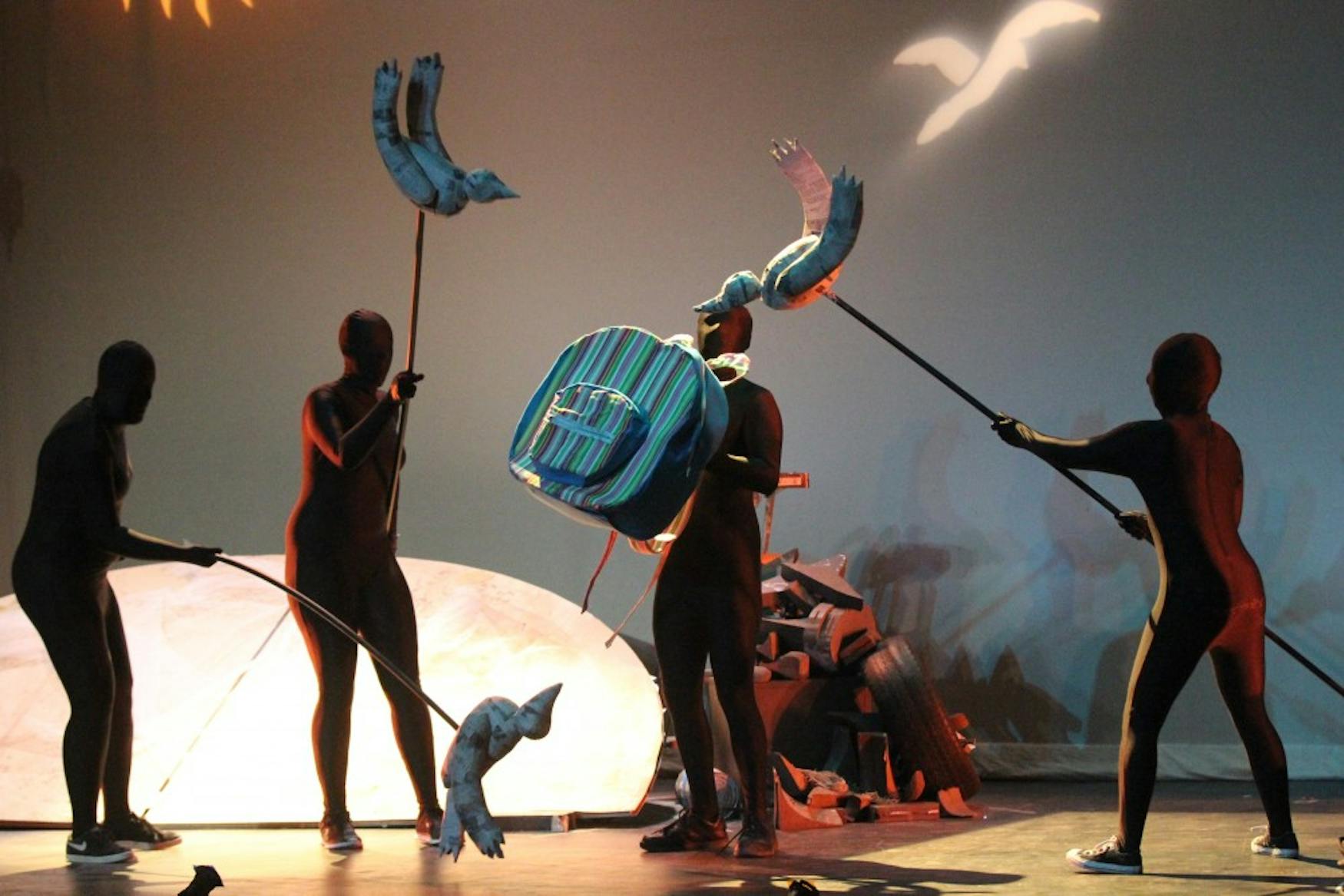Show exposes technical side of theater
Apackalypse: The Tech Show was the first of hopefully many more Brandeis productions to showcase the technical side of theater. Designed and choreographed in just two weeks, the show was a bold production with no actors or dialogue that followed a backpack named Packy through its adventurous dreams.
Packy, his best friend—the flower—and all of the other puppets in the show were controlled by puppeteers wearing black, skin-tight, spandex morph-suits. These full-body suits left the puppeteers identities totally anonymous, which seemed to be done intentionally to help focus the audience’s attention on the technical aspects of the show.
The designers of the show wanted to focus on the theme of re-using, so they chose to use repurposed and recycled materials.
Before the show even began, there was an eclectic assortment of props both on and beside the stage, including a step-ladder, paint cans, broken lights, trash cans, boxes, a tire and rehearsal cubes. These were just some of the props surrounding what became the star of the show: a friendly, oversized, turquoise, striped backpack named Packy.
The show opened with Packy enjoying a brief moment with a bright yellow flower. Then, a su den disaster struck—signified to the audience by a blaring wartime siren—and Packy was separated from the flower.
After a desperate but unsuccessful search for the flower, Packy fell asleep in the ruins. In Packy’s dream, however, the flower returned, and together they went on an exploratory journey through a mountain range, a rainforest, a desert, a beach, an ocean and, finally, the night sky.
In the end, Packy woke up to discover that the world was still destroyed, but that the flower had mysteriously returned.
The most notable aspect of the show, unsurprisingly because of its technical focus, was the seamless transitionings between settings. Through changes in music, lighting and swift alterations to the sets, the locations changed without the curtain ever closing.
Many of the locations were created through the use of backdrops and props that were on the stage for the entirety of the show. To create each scene, the props were only slightly altered in position and lighting was changed to create the backdrops.
One example of this was a prop that was initially a fire hydrant and then was flipped around to become a cactus for Packy’s time in the desert. Music changes and other lighting effects also helped inform the audience where the show had moved. Everything on stage, while seemingly random, had a purpose.
The absence of dialogue in the show created a challenge—conveying the plot through the lights, sounds, backdrops and a few props.
It also meant that all of the comedic and more sentimental moments in the show had to be delivered through the timing of the music and choreography. The show accomplished this particularly well in some comedic scenes. For example, when Packy encountered a camel in the desert, music from Aladdin started playing. The show used choreography to detail and demonstrate Packy’s adventures with some friendly turtles that were chased by a shark underwater.
Additionally, when Packy is looking for the flower before he falls asleep, his movements, with the backing of solemn music and dark lighting, evoke a sense of empathy from the audience.
For a production that was advertised as a show with no actors, the show accomplished its great task of conveying a daring plot line through only the technical side of theater remarkably.
While Packy’s dream adventures were a great story, the true highlight of the show was the demonstration of the Brandeis’s technical theatrical ability and talent for innovation.



Please note All comments are eligible for publication in The Justice.